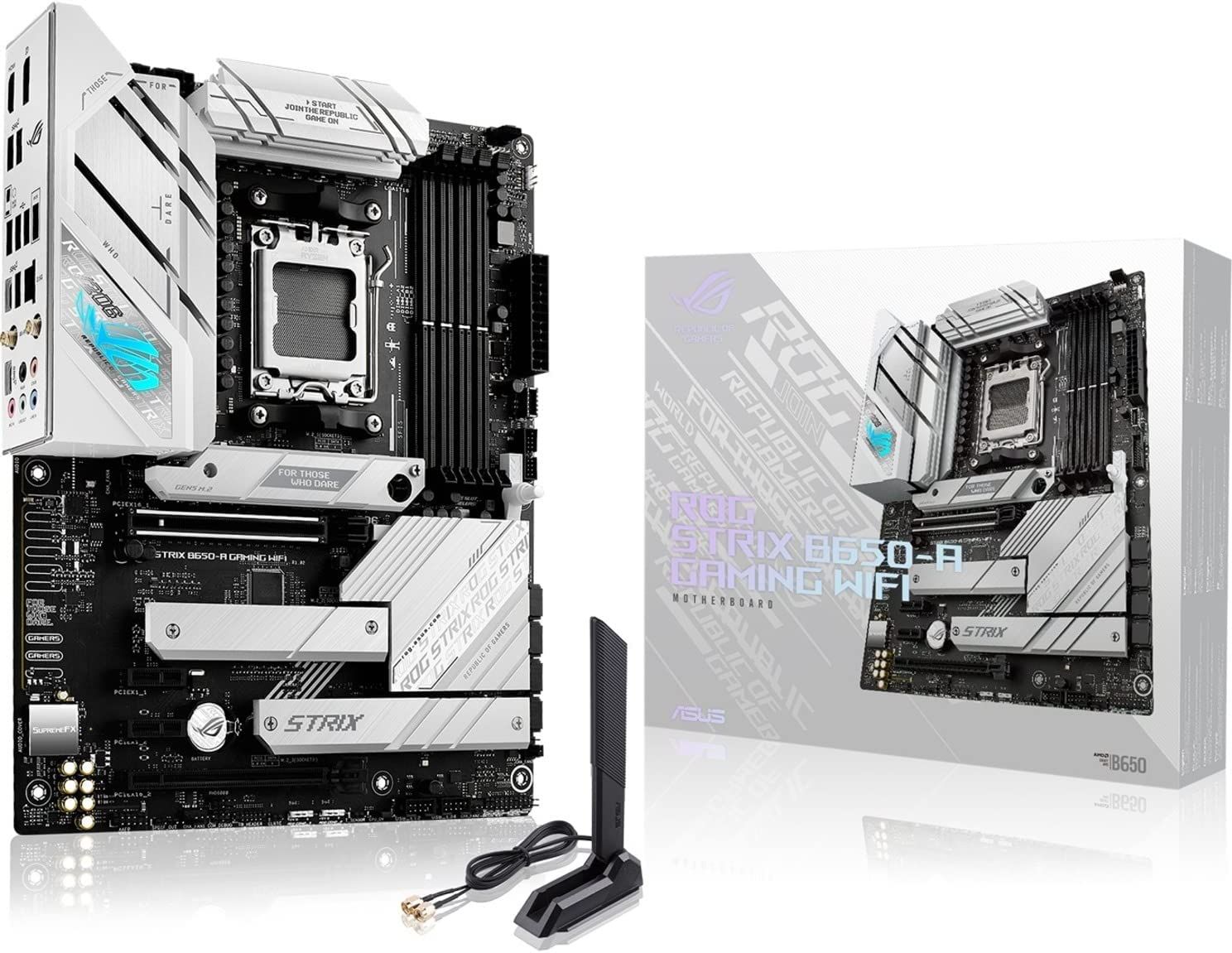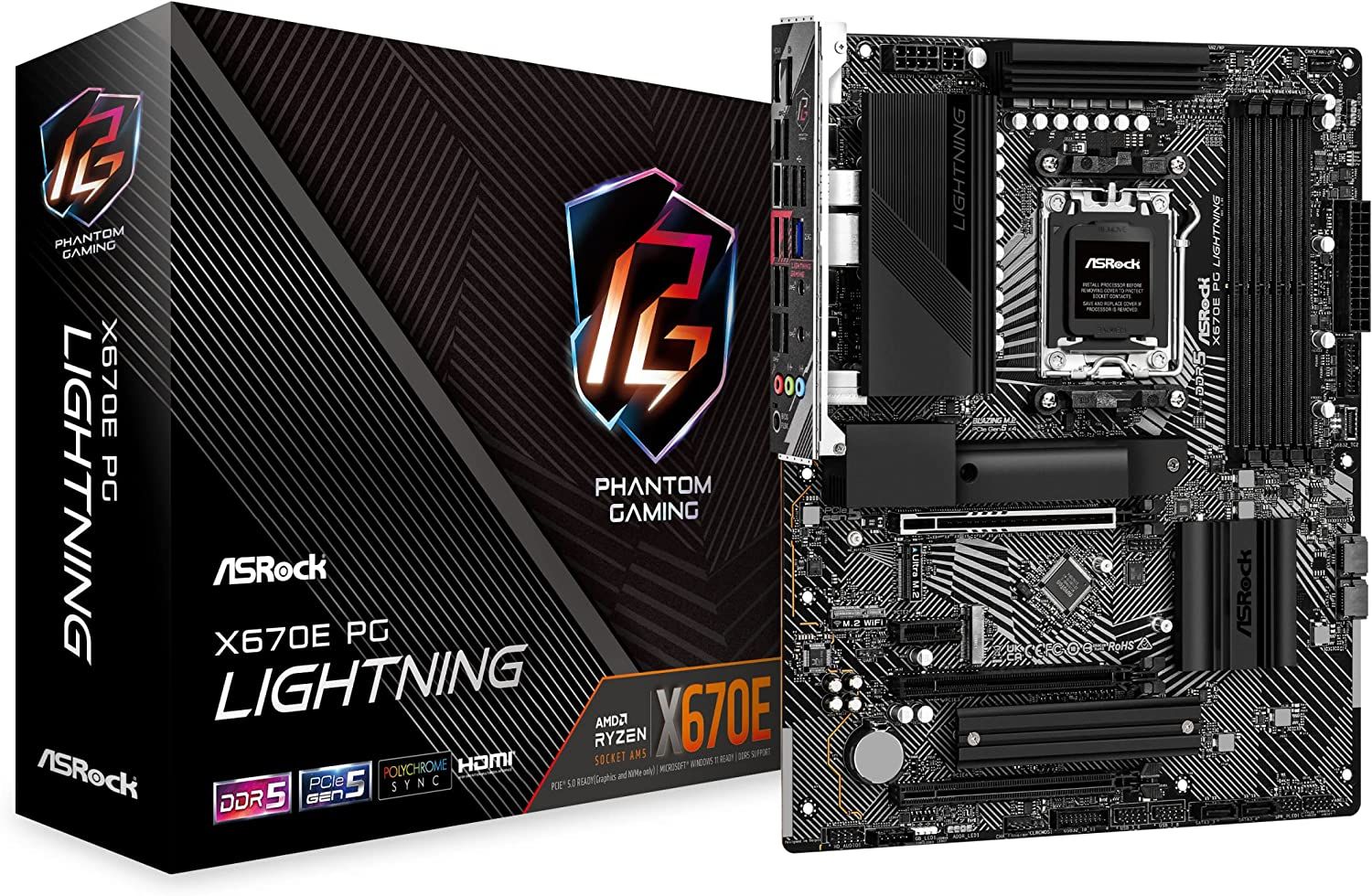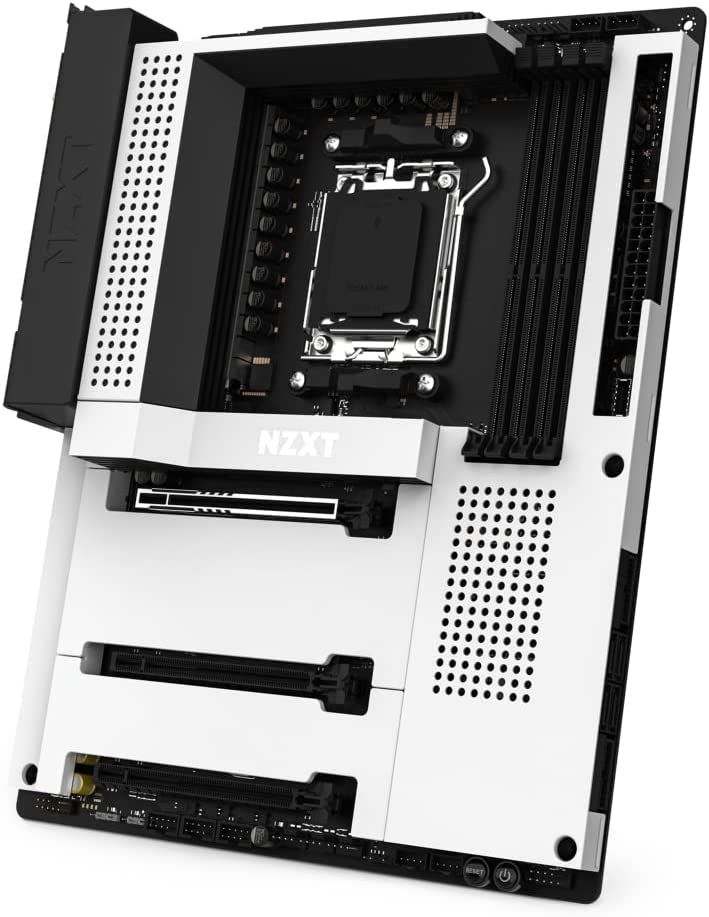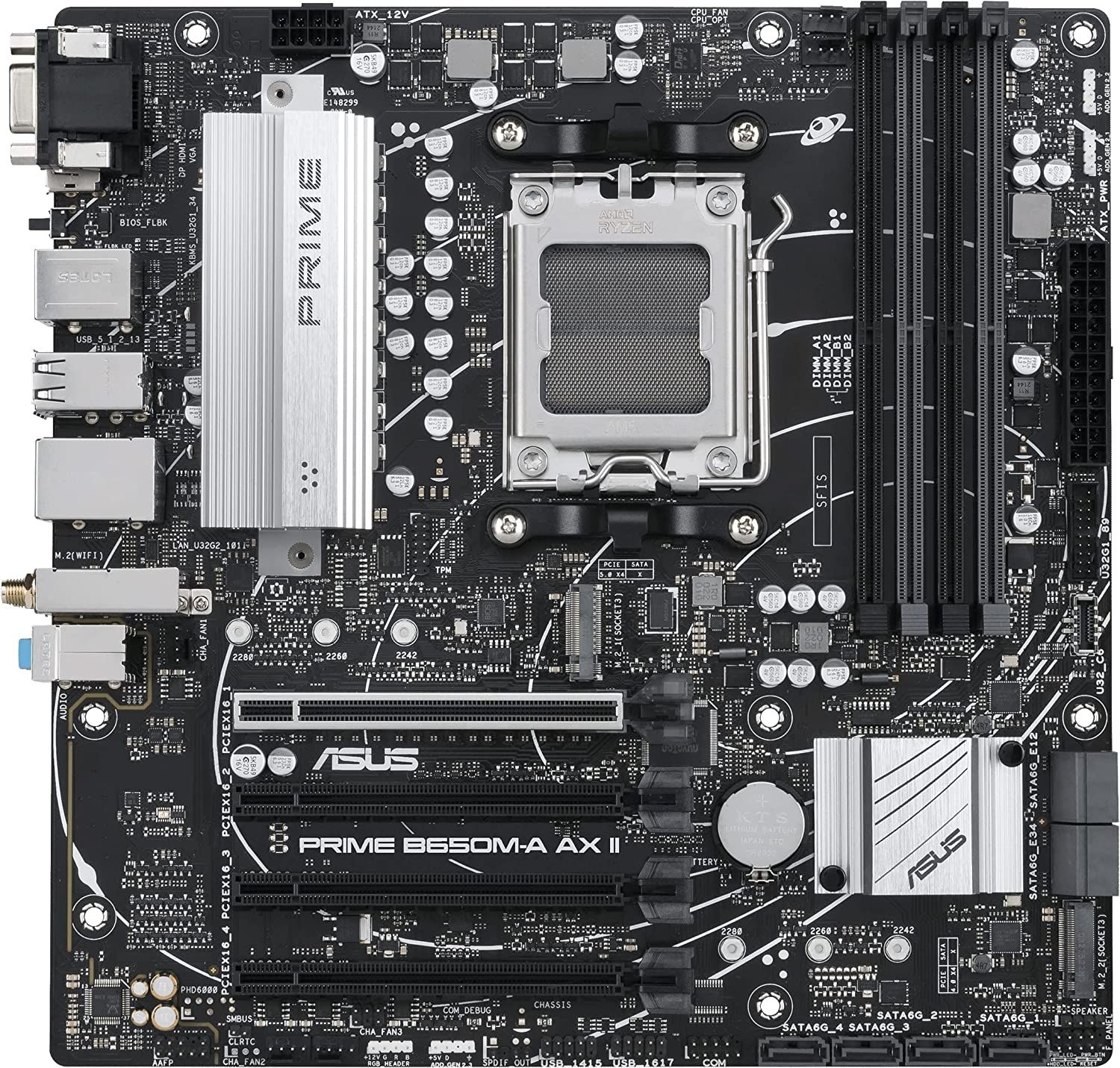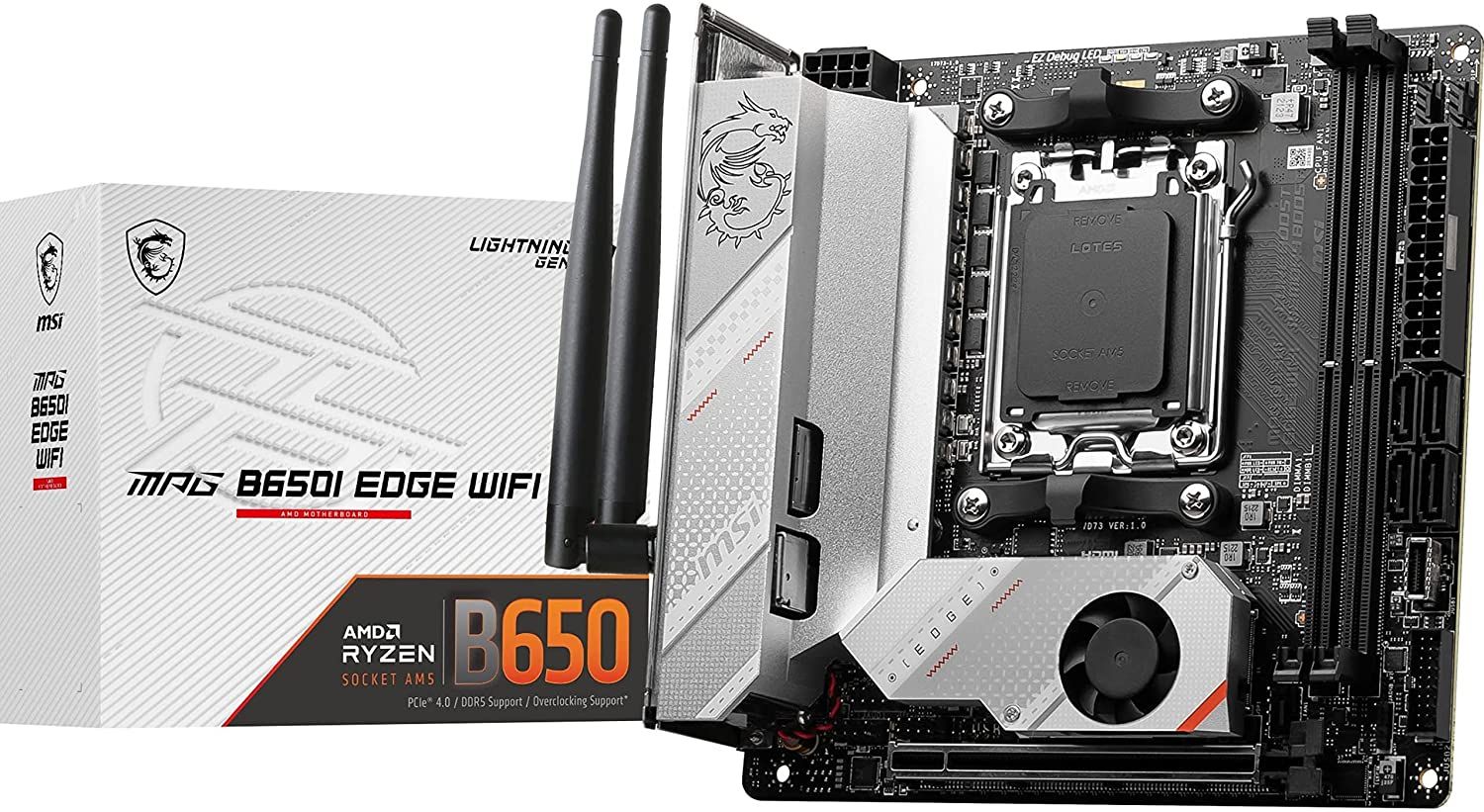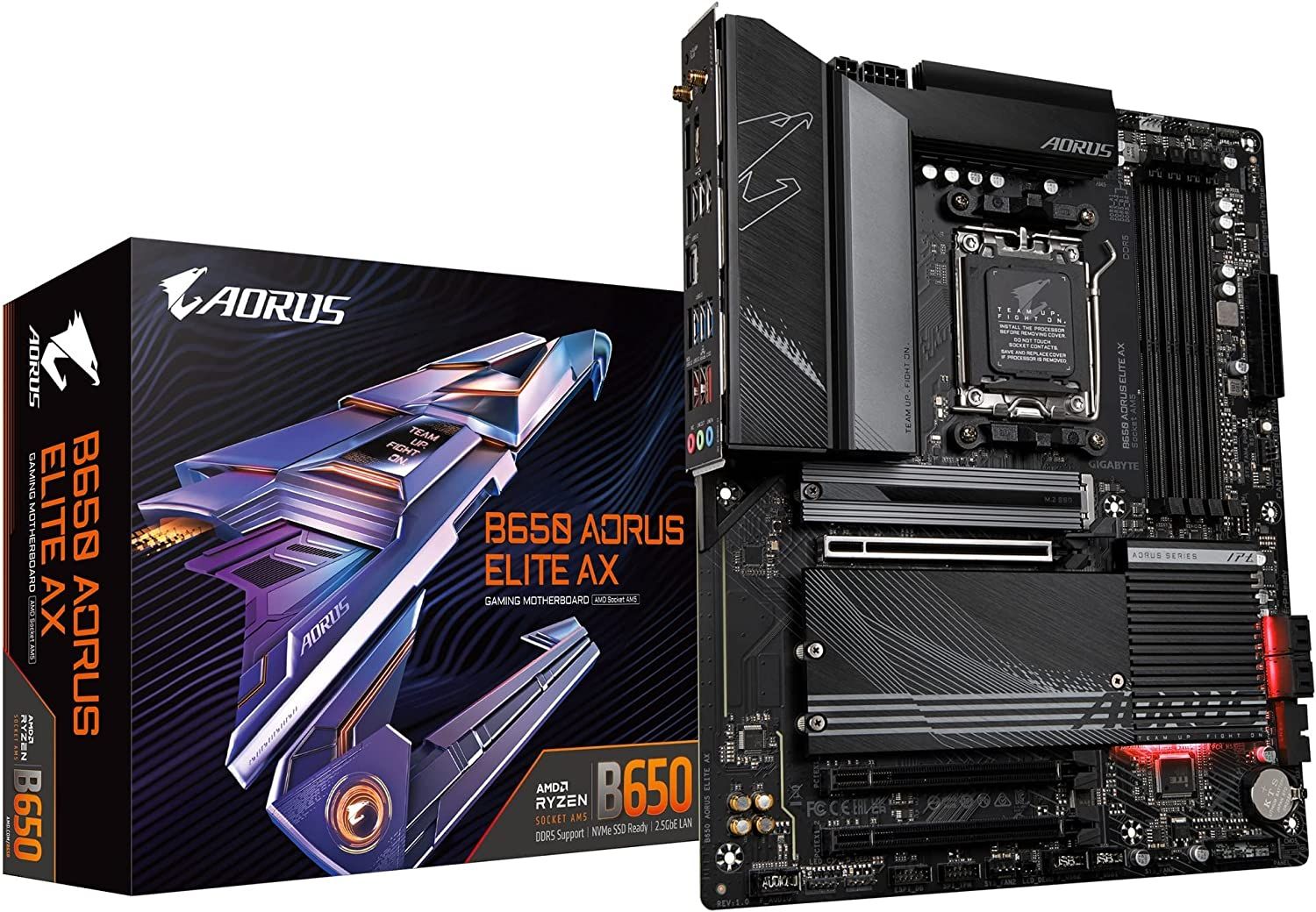AMD's Ryzen 9 7950X3D and the current gaming king, AMD's Ryzen 7 7800X3D are AMD's top-tier gaming CPUs that also double as some of the most efficient CPUs in play currently. That makes them some of the best choices for gaming as well as content creation in today's highly competitive world. AMD's AM5 socket is a relatively new entrant in a market where Intel's more mature Z690 and subsequent Z790 chipsets are far more established, having pushed both DDR5 and PCI-E Gen 5 as optional upgrades since 2021.
AMD's competing platform comes with chipsets to match, using the X670/X670E and B650/B650E to bring the latest technology stack with its processors. For entry-level users, AMD also offers the A620 chipset that allows them to harness AM5 processors along with the requisite DDR5 RAM. AMD's partners have responded in kind, pushing motherboards that cost as little as $80 to as much as $1300 at times to match consumer demand at lower price points while allowing enthusiasts and content creators to have solid top-shelf options.

The Best Motherboards For AMD Ryzen 9 7950X3D CPUs
The AMD Ryzen 9 7950X3D is the new king of the hill for gaming CPUs, but what is the best motherboard to pair it with as part of an upgrade?
Picking A Motherboard For the AMD Ryzen 9 7950X3D CPU
The AMD Ryzen 9 7950X3D is AMD's current highest-end CPU, offering both, a 16-core, 32-thread configuration and AMD's vaunted stacked L3 cache, something it calls 3D V-cache. However, as a result, it does have demanding hardware needs in terms of VRMs and power draw while ideally requiring suitable expansion under the hood given its target user base.
Some of the key things to look at when considering picking a motherboard are:
Power Delivery: The AMD Ryzen 9 7950X3D is an unlocked CPU and, while it is efficient compared to its direct competition, it can still be pushed higher and scales well with better cooling in tow. This requires it to have a motherboard with VRMs that can handle a power draw that tends to push toward the higher end of the spectrum when it comes to AM5-based CPUs.
Upgradeability: The Ryzen 9 7950X3D happens to be a high-end CPU and users investing in this and the underlying AM5 ecosystem might want to upgrade down the line to newer Ryzen 8000 or 9000 series CPUs or APUs. Having a higher-end chipset helps tremendously in such endeavors, given that while AMD uses its sockets for a longer time than its competition, the same can not be said about chipset-level support, which tends to focus on updates for higher-end chipsets such as the X670 and X670E offerings currently in play.
I/O And Expansion: The AMD Ryzen 9 7950X3D is currently AMD's highest-end CPU and comes close to the Ryzen 9 7950X in terms of raw power, while exceeding it significantly when it comes to gaming use cases. This means that it is used for a variety of applications, many of which have demanding memory, GPU, networking, and similar needs. This means that having a motherboard with plenty of I/O options and the ability to expand the capabilities of the PC down the line might be crucial to ensure it remains relevant down the line for power users and enthusiasts.
Our picks for the Best Budget Motherboards For AMD Ryzen 9 7950X3D CPUs
The ASUS ROG Strix B650-A Gaming Wi-Fi 6E is our candidate for the best overall budget motherboard, which is quite a mouthful and also somewhat surprising at first glance. Despite the affordable price point it retails at, the Strix's high-end looks come with a capable B650 motherboard chipset, with results offering what is essentially a polished showcase design featuring some of the latest tech that Asus has to offer. The looks are somewhat similar to higher-end Strix motherboards, but people expecting a more premium motherboard might complain about the limited onboard RGB lighting which is a fair issue given its middle-of-the-road pricing.
All in all, the ASUS ROG Strix B650-A Gaming Wi-Fi 6E is an excellent motherboard with decent power delivery (12+2 phase), a solid network stack comprising Wi-Fi 6E, 2.5G Ethernet and Bluetooth 5.2, and decent overclocking potential out of the box, in addition to ASUS's Strix bios layout, which is arguably better than most of its competitors in terms of UI and options. There is a drawback of the PCI-E slot being gen 4.0, but that is more of a future-proofing factor; there is no PCI-E gen 5.0 GPU out to date. Regardless, users on a budget would struggle to find a better value motherboard for the Ryzen 9 7950X3D.
As the only X670E-based motherboard on our list, the ASRock X670E PG Lightning Gaming Motherboard has big shoes to fill and it does so easily for the most part. Powered by AMD's premium chipset this generation, ASRock's offering comes with a host of features including 2.5G Ethernet support, the ability to overclock memory past the 6600 MHz barrier, and an impressive 14+2+1 phase power delivery mechanism ensuring stable and reliable power delivery to a 16-core Ryzen 9 7950X3D.
With a decent price cut in play, it also happens to be one of the cheapest X670E motherboards on offer currently while packing in excellent I/O options under the hood. On the connectivity end, the X670E PG Lightning provides both, Gen 5 PCI-Express GPU and M2 Storage slots, making it a future-proof purchase. ASRock is also generous when it comes to USB ports and there is a generous allocation of USB ports both on the front and the back of the motherboard.
One complaint about the Lightning is the slow boot times out of the box, but subsequent BIOS updates are expected to rectify this. Another complaint would be about the missing Wi-Fi Module; The PG Lightning ships without one while making allocations for it as part of its IO plate as well as offering a strategically placed M2 Key slot in case users decide to go that route.
All in, the X670E PG Lightning checks all the important boxes for us when it comes to a budget motherboard, and while it does come slightly short in 2 meaningful ways, the benefits still outweigh the costs here, making it Game ZXC's candidate for the best AM5-based budget motherboard for the 7950X3D and the 7900X3D processors.
The NZXT N7 B650E Gaming Wi-Fi 6 Motherboard is an excellent AMD socket AM5-based motherboard based on the 650E chipset with decent overclocking out of the box, capable networking on offer, and plenty of storage options thanks to the triple M2 slots featured on the motherboard. With a PCI-E Gen 5 slot for a GPU, it is somewhat future-proof compared to some of the other budget options, albeit at a price that might not be everyone's idea of budget.
With excellent looks in tow in addition to tight integration with NZXT's CAM software which can be a plus if users have any of their other peripherals on hand coupled with a minimalistic design that we found both functional and premium-looking at the same time, the NZXT N7 B650E Gaming Wi-Fi 6 Motherboard isn't pulling any punches as it wants a bigger piece of the AMD motherboard pie and is a great start to hopefully more premium offerings from NZXT down the line.

AMD Ryzen 9 7950X3D vs 7900X3D: Which to Buy?
The AMD Ryzen 9 7950X3D and 7900X3D are AMD"s latest attempts to wrest back the gaming market from Intel. But how do they stack against each another?
The ASUS Prime B650M-A AX II Motherboard is a no-nonsense offering by ASUS that doubles as an essential motherboard for mATX builds that is a no-frills design aiming to offer as many features as possible without compromising on value. And with Wi-Fi 6, Bluetooth 5.2, 2.5G Ethernet, and dual M2 slots, connectivity should not be a concern. The ASUS Prime B650M-A AX II Motherboard supports up to 15 USB ports and allows up to 128GB of DDR5 memory at overclocked speeds of up to 6400MHz, though it might be a bit tricky to get a PC's rams to stay at those levels.
What is an excellent, feature-packed offering by ASUS is somewhat undone by the fact that it has no PCI-E 5.0 gen x16 slot for GPUs. It does however feature an M2 slot that does offer Gen 5 x4 connectivity in case users were to upgrade to a pricey SSD down the line. All in all, value is a strong factor as is the ability to build an mATX build using the Prime B650M-A AX II in a compact, but capable PC.
The MSI MPG B650I Edge Wi-Fi Gaming Motherboard is an excellent MSI MPG-themed motherboard that offers decent power delivery, passable expansion slots, and a price that simply boils down to how much users wish to pay for a premium-built ITX motherboard with excellent connectivity. With Wi-Fi 6E, Ethernet 2.5G, and Bluetooth 5.3 onboard, it has users covered on the connectivity part in addition to the ability to push memory past 6600MHz, well past AMD's sweet spot for the 7000 series at 6000MHz for performance needs.
While it does have its limitations and upgrade-specific quandaries thanks to a PCI-E 4.0 graphics slot for those looking to stick with socket AM5 for AMD's perceived longevity, if they plan a motherboard upgrade down the line, it should not be a pressing concern for the foreseeable future. At the same time, the chipset fan, which looks great as part of the motherboard's overall aesthetic can get loud in certain circumstances, making it a somewhat less ideal motherboard to partner an ITX build with if users desire silence as part of their minimalistic build approach.
The GIGABYTE B650 AORUS Elite AX is an excellent and capable entry in our list as the feature-packed Wi-Fi 6E-enabled motherboard remains a mainstay on our recommendations list. The B650 AORUS Elite AX happens to be an excellent contender for the best budget motherboard overall when it comes to its value proposition: It includes an excellent networking stack, solid I/O, Gen 5 M2 support, and good overclocking support to boot. While looks are always a personal preference for most of us, there is no denying that the Aorus Elite AX looks better than most of the other motherboards on our list and the aesthetic uplift does give it leverage over similarly spec'ed motherboards even if they come with the reliable 14+2+1 phase power delivery system that the Gigabyte motherboard does.
While the motherboard gimps on debug LEDs and limits its GPU slot to Gen PCI-E, these trade-offs are more or less acceptable considering the price range we are looking at. All in all, the Aorus Elite AX is a bargain to be had at a price range where one would be looking for much less by the competition, making it a solid purchase for a new Zen-4 based X3D Ryzen processor.
Looking For More Than A Motherboard?
If users have already picked a motherboard for their Zen 4, X3D-based processor, do consider checking out our guide for the best AMD processor for gaming as we go head-to-head between the Ryzen 9 7900X3D and the Ryzen 9 7950X3D. For the best motherboard, do check out our guide for the best motherboards users can get for the Ryzen 9 7950X3D (and other AM5-based processors such as 7900X3D/7950X).
If users have already picked up the motherboard and processor, it would be a great time to pick up some Ryzen-specific memory to round off their purchase given that it is available at a deep discount of late. And don't forget about adequate cooling; AMD's Ryzen 7 and 9 X3D processors tend to run hot with lower thermal limits than their predecessors, and a good cooler can make all the difference in terms of performance on a brand-new AMD system.

Best CPU For Gaming: AMD Ryzen 9 7950X3D vs Intel Core i9 13900KS
AMD's latest offering takes the gaming crown from Intel, but is it worth your consideration in this matchup of efficiency versus brute force?
FAQ
Q: Is PCI-Express 5.0 Important on a new motherboard?
Yes and no. Currently, while there are no PCI-Express 5.0 GPUs available, PCI-E 5.0-based SSDs are already out for high-end consumers making this a more important requirement if you plan to get high-end SSD storage. However, if you go PCI-E 4.0 as a choice on your motherboard, that is also fine for any current-gen system. PCI-E 5.0 might be at best a future-proof choice
Q: What AMD motherboards do the AMD Ryzen 9 7950X3D and AMD Ryzen 9 7900X3D work with?
All AMD AM5-based motherboards that are either B650 or X670-based will support the 7900X3D or the 7950X3D but that might not be the case out of the box. You might need a BIOS update for older versions of said motherboards. There are workarounds to upgrading your BIOS without a processor, but they vary from vendor to vendor. Always check the details on a vendor's page to see if their motherboard supports your processor on the BIOS version it shipped it before attempting any troubleshooting. It could save you valuable time and hassle.

